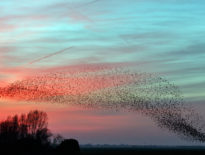New Tools for Creating Healthy Communities
The Living Community Challenge (LCC) calls upon planners, developers, policy-makers and community members to rethink how they design, build and plan for community-scale projects, including streets, blocks, neighborhoods, campuses and more. The LCC provides a vision and framework that can lead a community towards the most advanced measure of sustainability in the built environment.
Early October marked the launch of the Living Community Challenge Standard, Version 1.1, and the companion LCC Handbook, Version 1.1. This 1.1 version is a tweak to the 1.0 Standard that was launched in May 2014.
Alicia Daniels-Uhlig, LCC + Policy Director, shares that “communities pursuing the Living Community Challenge will be pleased to see alignments with the Living Building Challenge version 3.1 such as Petal and Net Zero Energy Certification pathways, registration guidance between the LBC and the LCC programs, and further clarification of the LCC process.”
The evolving Standard and Handbook will continue to support the five communities registered to pursue the LCC, and the over two-dozen communities around the world exploring the feasibility of LCC. Some of the update highlights include:
- Expanded certification options,
- An elaboration on the Vision Plan and Master Plan process
The new Living Community Challenge Handbook explores what types of communities can use the LCC and Imperative-by-Imperative clarifications.
The LCC has seven performance categories (also known as Petals): Place, Water, Energy, Health & Happiness, Materials, Equity, and Beauty. Noted below are some key changes for each Petal:
- Place: The minimum percent required for food production based on Floor Area Ratio (FAR) in I-02 Urban Agriculture, has been aligned with Living Building Challenge (LBC) version 3.1, which reduced requirements from 80% for communities with a FAR of 0.05% or less, to 50% for communities with a FAR of 0.09% or less. I-04 Human-Powered Living clarifications include mobility plan requirements aligned with LBC version 3.1.
- Health and Happiness: I-10 Resilient Community Connections requirements previously for Transects 5 & 6 now apply to all Transects to ensure that all sensitive infrastructures, such as lift stations, sub-stations, sewage treatment, community centers, schools and the like, are out of the flood plain.
- Materials: Communities can no longer use the Living Future Carbon Exchange to satisfy I-12 as it is no longer in operation due to the complexities of navigating a shifting global market, and there is an Exception that allows surplus renewable energy to satisfy some of the community’s required carbon offsets
- Equity: Existing communities may be exempt from some prescriptive requirements of the I-14 table if they can demonstrate the community is human-scaled, and document that advocacy measures have been conducted in alignment with the intent to create human-scaled rather than automobile-scaled places. Within requirements for I-18 JUST Organizations, the list of firm types that are eligible have been expanded.
Download these resources here.



